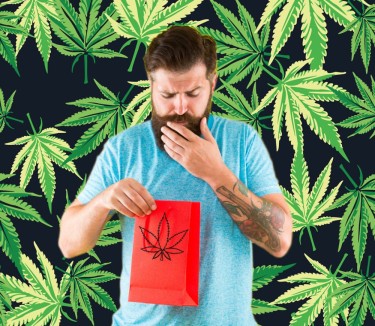
According to Cache Valley Daily, around 60% of Utah's medicinal cannabis users obtain their cannabis from sources other than the state's authorized market. The study, done by Cannabis Public Policy Consulting (CPPC) on behalf of the Utah Department of Agriculture and Food (UDAF), sheds light on accessibility issues in the state's medicinal cannabis program.
Dr. Brandon Forsyth, Director of Industrial Hemp and Medical Cannabis at UDAF, emphasized the need of conducting annual market analyses to evaluate the performance of Utah's Medical Cannabis program in guaranteeing patients' access to vital treatment.
Surveying close to 200 medical cannabis patients, the study discovered that while monthly prices for medical cannabis products in Utah rank among the lowest in the nation, nearly a quarter of patients still seek products outside the state due to cost constraints within Utah.
Among those surveyed, 58% expressed satisfaction with the availability of medical cannabis within the state, while 41% indicated either limited or very limited access to products.
Statistics from the Marijuana Policy Project estimate approximately 71,850 registered medical cannabis patients in Utah.
Cost Concerns Drive Patients Out-of-State
A sizable fraction of patients are still drawn to unregulated sources by the appeal of cheaper rates, even in Utah, despite efforts to create a controlled market for medicinal cannabis. Although Utah has some of the lowest monthly costs in the US for medical cannabis products, according to a CPPC survey, over 25% of patients are forced to look for alternatives outside of their state because of financial limitations. This discrepancy calls into question the accessibility and cost of medicinal marijuana under Utah's current legal system.
The decision to obtain cannabis from unregulated sources is often driven by the stark contrast in pricing between Utah's legal market and neighboring jurisdictions. Patients facing high medical expenses may find the cost savings offered by unregulated sources to be a compelling factor in their decision-making process. Additionally, factors such as taxes and regulatory burdens imposed on legal dispensaries may contribute to the perception of inflated prices within the state, further incentivizing patients to explore alternative avenues.
Beyond the immediate financial considerations, patients may also perceive unregulated sources as more flexible and accommodating to their individual needs. While legal dispensaries adhere to strict regulations and may face limitations in product variety or availability, illicit channels may offer a wider range of options at potentially lower costs. This discrepancy highlights the importance of not only addressing price competitiveness but also ensuring that legal dispensaries can adequately meet the diverse needs of medical cannabis patients in terms of product selection and availability.
A multimodal strategy that puts price, accessibility, and regulatory compliance first is needed to address the problem of patients obtaining cannabis through unregulated channels. The regulated and uncontrolled markets may come closer together if regulatory procedures are made more efficient, legal dispensaries' overhead expenses are decreased, and patient-centered pricing schemes are put into place. Utah's medical cannabis program may aim to provide equitable access to safe and inexpensive treatment choices for all qualifying patients by addressing the underlying issues that lead patients to look for alternatives outside of the legal framework.
Mixed Perceptions of Supply Availability
The survey conducted by CPPC among Utah's medical cannabis patients reveals a nuanced landscape of supply availability perception within the state. While a majority express satisfaction, a significant portion also report limited or very limited access to essential treatments. This disparity underscores the complexity of ensuring consistent and equitable supply distribution.
Uneven dispensary distribution across regions contributes to varied perceptions of accessibility. Patients in areas with more dispensaries may feel better served compared to those in underserved regions. Expanding the geographical reach of dispensaries could mitigate access discrepancies and ensure equitable distribution statewide.
Supply chain dynamics, including cultivation and distribution disruptions, impact product availability. Patients dependent on medical cannabis for health management may face heightened anxiety during shortages. Addressing these challenges requires robust infrastructure and proactive measures to ensure uninterrupted access to medication for all patients.
Growth in Patient Enrollment
Statistics from the Marijuana Policy Project show that Utah's medical cannabis program has shown a steady increase in patient registration, with an estimated 71,850 registered medical cannabis patients. The state's growing need for medicinal cannabis as a therapeutic alternative is shown by this spike in patient numbers. But in order to properly satisfy the growing demand, accessibility concerns must be addressed and a dependable supply chain must be maintained.
The expanding patient enrollment highlights the importance of proactive measures to enhance the accessibility and affordability of medical cannabis treatments. With a larger patient population relying on these medications to manage their health conditions, it becomes paramount to streamline regulatory processes, optimize supply chain logistics, and implement pricing strategies that cater to patients' financial realities. By doing so, Utah's medical cannabis program can better accommodate the evolving needs of its growing patient base.
In addition, the increasing number of patients enrolled emphasizes how important it is for industry players, patient advocacy organizations, and regulatory bodies to keep working together. Through communication and collaboration, Utah can better negotiate the intricacies of its medical cannabis environment, recognizing and resolving issues while optimizing the program's advantages for patients throughout the whole state. In order to guarantee that Utah's medical cannabis program is patient-centered, flexible, and responsive as it develops to meet the demands of its growing patient base, a cooperative approach will be essential.
Bottom Line
Utah's medical cannabis program grapples with significant challenges, including patients seeking products from unregulated sources, varying perceptions of supply availability, and a growing number of registered patients. Resolving these issues demands a concerted effort to improve accessibility, affordability, and regulatory adherence within the state's legal framework. By prioritizing patient-centric approaches and fostering collaboration among stakeholders, Utah can fortify its medical cannabis program to better cater to the diverse needs of its patient population. This entails streamlining regulatory processes, optimizing supply chain logistics, and implementing pricing strategies that align with patients' financial realities. Through proactive measures and sustained cooperation, Utah can enhance the accessibility and effectiveness of its medical cannabis program, ensuring equitable access to safe and beneficial treatment options for all eligible patients across the state.







